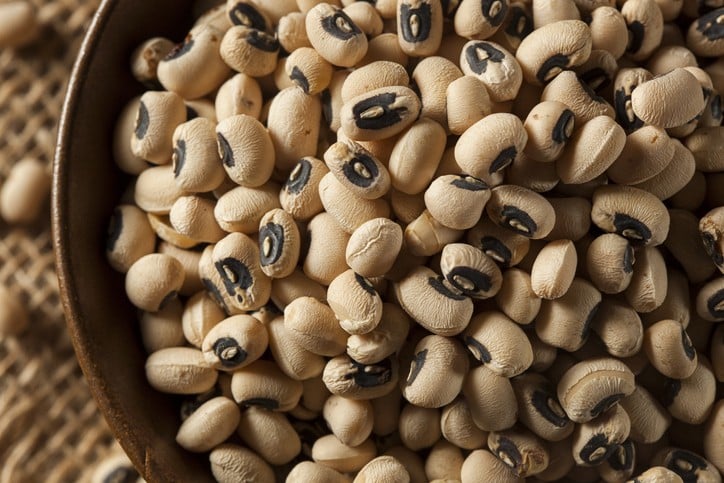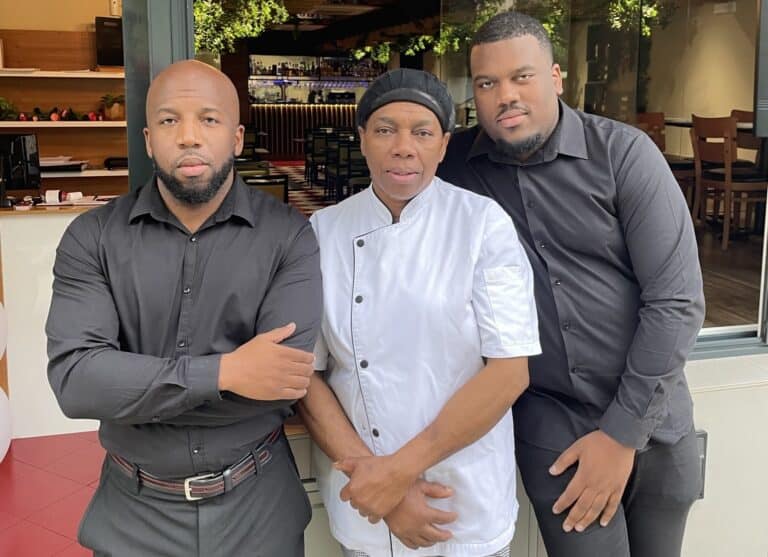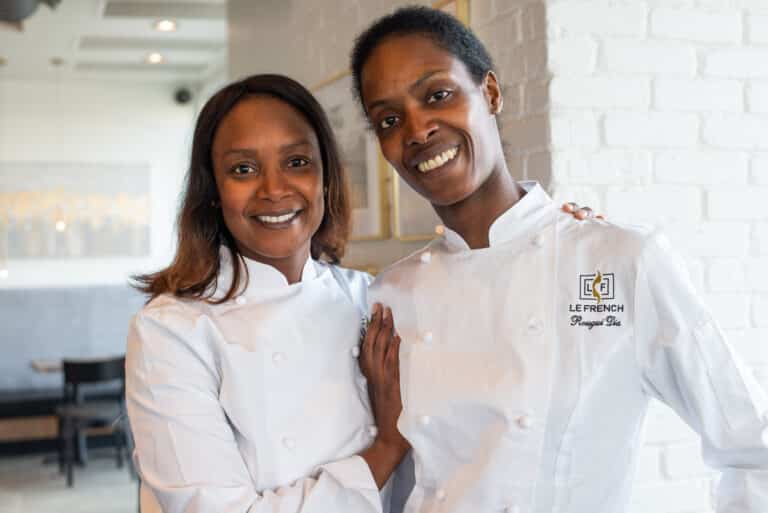|
Getting your Trinity Audio player ready...
|
If you have any connection to the American South, it’s likely that you’ll have a pot of black-eyed peas stewing somewhere in the kitchen on New Year’s Day. For 364 days out of the year, the black-eyed pea is a solid soul food staple, but on New Year’s Day, this plebian pea (actually a bean) takes on magical qualities, beckoning millions with a promise, “Eat me, and I will bring you good fortune (in coins) or good luck.”
It’s one of our country’s most interesting and shared culinary traditions since it crosses class lines, geographic boundaries and racial differences. You may wonder how this onetime “slave food” gained such celebrity status. Since soul food is one of America’s earliest fusion cuisines, it’s no surprise that there are several theories for the origin of this particular New Year’s Day superstition.
Passing on the Luck of Black-Eyed Peas
In West Africa, where black-eyed peas are native and called “cowpeas,” traditional religions have deities and spirits who possess human attributes, including having favorite foods. On religiously auspicious days, followers ritually prepared black-eyed pea dishes to please certain gods. Many West Africans also believed that the peas’ eyes warded off the omnipresent “Evil Eye.”
Black-eyed peas are a festive food for non-religious occasions as well. The Yoruba people of Nigeria make Ewa-Ibeji–a black-eyed pea dish including onions, pepper, smoked fish and palm oil–when they want to ceremonially bless twins.
As a twin, I fully endorse this concept. Thus, enslaved West Africans had several good reasons to transplant the black-eyed pea’s potential for good fortune in the Americas.
As for eating this lucky dish on January 1st, we can thank western Europeans. The British crossed the Atlantic with the “first-footer” superstition—a belief that the first visitor one should get on New Year’s Day is a person with, among other things, dark eyes. Black-eyed peas on the table made a good substitute for a dark-eyed visitor at the door. Sephardic Jewish immigrants arrived here with a tradition of eating black-eyed peas on Rosh Hashanah (the first day on the Jewish calendar) for–you guessed it–good luck.
Perhaps different folkloric perspectives on black-eyed peas converged in the kitchen when black cooks prepared meals for the numerous Sephardic Jewish families living in antebellum Charleston, South Carolina, and Savannah, Georgia. Ultimately, the story may come back full circle to Africa given the Moorish influence in southern Spain where the Sephardic Jews thrived before being forced into exile by the Spanish Inquisition.
Whatever the historical path, we’re lucky to have delicious and nutritious black-eyed peas on our plates this January 1st, and any other day of the year.
RELATED: A Soulful Holiday Menu From The Creators of Eat The Culture
Purple Hull Peas
This versatile, yet rustic recipe comes from Hardette Harris, a private chef from Minden, Louisiana. Purple hull peas are a variety of field pea. If unavailable in your area, you may substitute black-eyed peas, cream, or crowder peas.
If you can’t find purple hull peas at your local grocery store, try a farmers market or roadside stand. A pot of peas makes a wonderful main dish when served with cornbread, yellow onion slices, tomato slices, and a couple dashes of pepper sauce or apple cider vinegar.
Makes 8 servings
INGREDIENTS
2 large smoked ham hocks (about 1 pound)
3 large smoked pork neck bones (about 1 pound)
5 ounces thinly sliced salt pork
10 to 12 cups water
8 cups shelled fresh purple hull or other field peas (about 2 pounds)
1 small yellow onion, sliced
2 fresh okra pods
1/4 teaspoon seasoned salt, or to taste
1/4 teaspoon garlic powder
1/2 teaspoon ground black pepper
PREPARATION
1. Rinse the ham hocks, neck bones, and salt pork. Place them in a large pot and cover with water. Bring just to a boil, reduce the heat, and simmer for 1 hour. Skim away any foam from the surface. Taste the cooking liquid. If it is too salty, discard 1 cup at a time and replace it with fresh hot water until the flavor is adjusted to your taste. If the liquid is bland, continue simmering to concentrate the flavors. Discard the solids.
2. Return the cooking liquid to a simmer. Stir in the peas, onion, okra, seasoned salt, garlic powder, and pepper. Cover and simmer until the peas are tender, but not falling apart, 45 to 60 minutes. (The fresher the peas, the more quickly they cook.) Check the seasoning and serve hot.
3. If desired, you may pull meat off the ham hocks and add it to the dish before serving.








